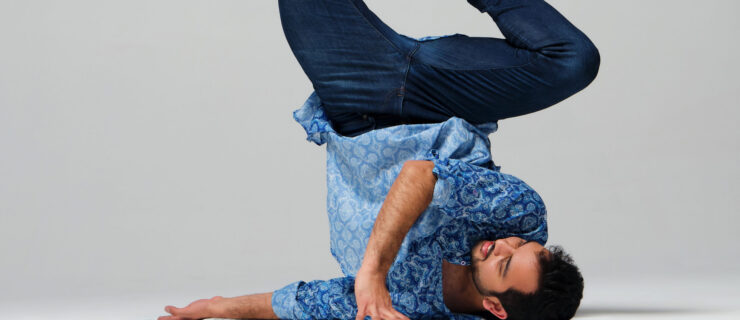Tackling Pelvic Floor Dysfunction, A Taboo Dance Injury
Have you ever experienced urinary leaking during dance class? Or persistent pain in your genital region? Many dancers find these symptoms to be awkward or embarrassing, so much so that they may not mention them to anyone. However, they may be signs of pelvic floor dysfunction, which is actually more common among dancers and other athletes than in the general population. There isn’t much research specific to dancers, but studies of artistic athletes in similar disciplines, like gymnasts and cheerleaders, find that, in some cases, more than 80 percent experience symptoms.
What Is the Pelvic Floor?
Think of your pelvis as a big bowl. The pelvic floor muscles make up the base of the bowl. There is an external layer—the muscles you’d squeeze to try and stop the flow of urine or try not to pass gas—and a deeper layer that helps support your internal organs. The pelvic floor muscles work together with your abdominals to stabilize your pelvis, and they also help to manage the pressure that’s created inside your abdomen when you breathe and move.
Why Are Dancers Prone to Problems?
High-impact activity, like dancing, is associated with pelvic floor dysfunction, says Brooke Winder, a physical therapist in Southern California dually trained in orthopedic and pelvic floor physical therapy. Many dancers are also naturally hypermobile, another risk factor. Training issues are likely involved as well. “Dancers are often training for such long amounts of time without recovery. Pelvic floor dysfunction could be related to overload, or it could be because dancers aren’t properly prepared and they need better cross-training,” says Winder.

Habits such as excessive gripping in the external rotators or tucking the hips under could also contribute, says Julia Rosenthal, a New York City physical therapist who is also trained in both orthopedic and pelvic floor physical therapy. “A lot of dancers are trained to get a stable core by really sucking in,” says Winder. “That can actually place excessive pressure on the pelvic floor.”
As with any other injury, not sleeping well or eating enough, or high levels of stress, can contribute to pain. “When the system gets stressed overall, the pelvic floor is a common place we might feel those ramifications,” says Rosenthal. A history of pregnancy is a risk factor, as is a previous fall on the tailbone or pelvis. Despite long being seen as a “women’s issue,” Rosenthal adds, dancers of all genders can experience pelvic floor dysfunction. For example, male dancers who lack the strength they need for partnering may place excessive pressure on the pelvic floor.
How Can Dancers Maintain a Healthy Pelvic Floor?
Many people have heard of Kegel exercises, where you squeeze the pelvic floor muscles to strengthen them. However, these exercises may not be helpful for dancers experiencing pelvic floor dysfunction, as their issue is often tightness. The key for many dancers is to work on relaxing, lengthening and reducing stress on the pelvic floor.
One of the best ways to accomplish this is to work on deep breathing. “When you breathe in, your diaphragm moves down, and the pelvic floor lengthens and relaxes,” says Winder. Lie on your back and take slow, deep breaths, expanding into the ribs and belly while imagining the pelvic muscles softening. Or, lie on your side and place your hand between the sitz bones; as you inhale, feel the pelvic floor relax down. “After a rehearsal or class, or at the end of your day, do some reset breathing,” says Rosenthal. “Check in and see how what you did affected your ability to connect with your muscles and feel them relax.”
Also stay hydrated and get plenty of fiber to keep your bowel movements regular, says Winder. When you use the bathroom, try not to strain—focus instead on relaxing.
Cross-train to strengthen your whole body and avoid placing excessive stress on the pelvic floor. In class, remember that “the level of effort should correspond to the activity,” says Rosenthal. “You shouldn’t be gripping in the hips and abdominals just to hold your first position.”
If you are experiencing signs of pelvic floor dysfunction, tell a doctor or physical therapist, and get a referral to a specialist if needed. “Know that while these things are common, that doesn’t mean they are normal,” says Rosenthal. “And they can get better.”
Symptoms to Watch For
• Hip or back pain that persists despite treatment
• “Pain around the pelvis that’s hard to describe, or tailbone pain,” says physical therapist Julia Rosenthal
• Urinary leakage—especially with activities like jumping—trouble starting the flow of urine, or feeling like you need to pee all the time
• Constipation or trouble emptying your bowels, or feeling like you can’t hold in gas
• Feelings of pressure in the pelvis, or pain in the genitals
• For dancers who are sexually active, pain or trouble with sexual function




